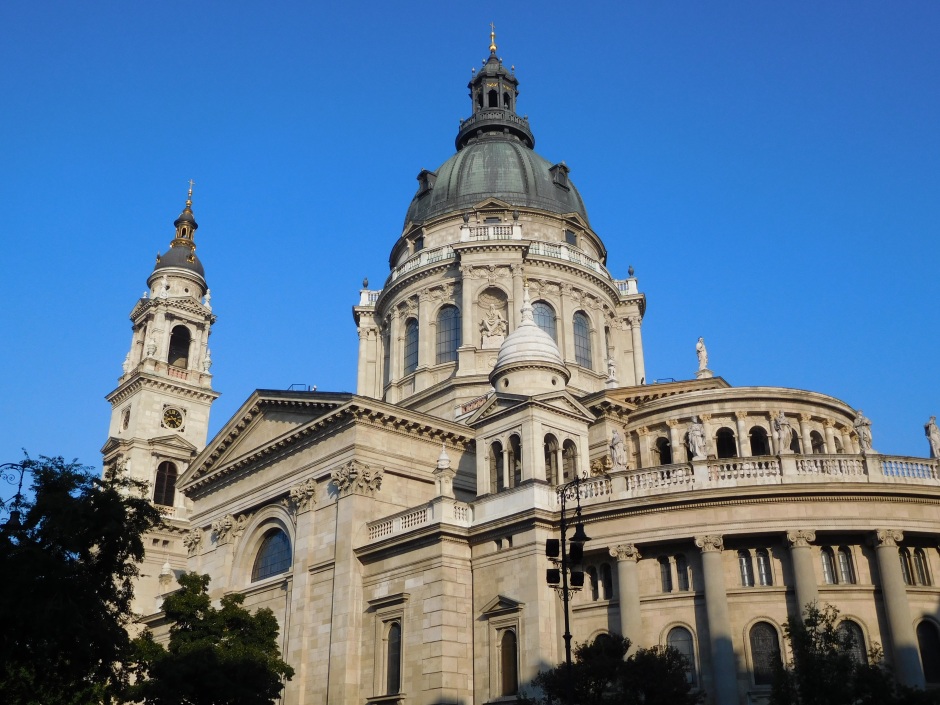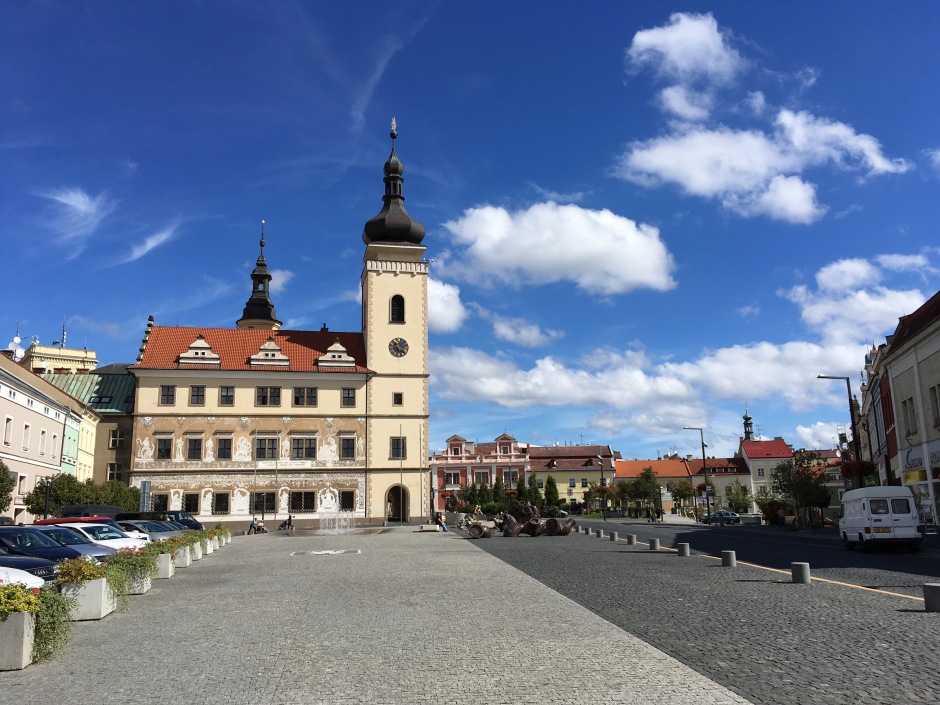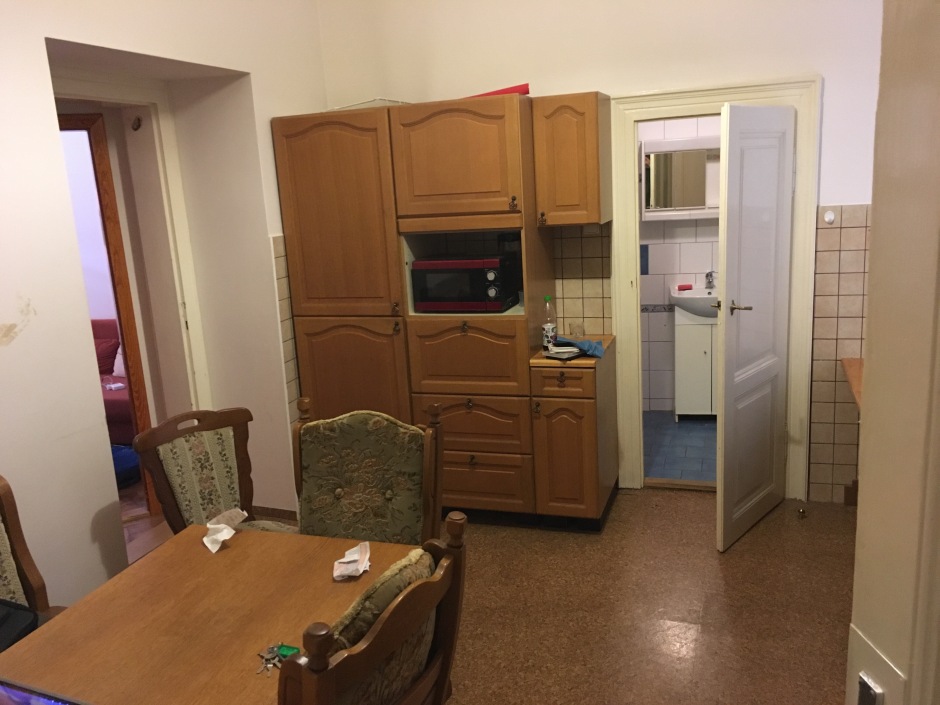Routinely when I travel, I am struck by the wonderful realization that this beautiful and wondrous planet we live on is home to so many intriguing and fascinating ways of life. It’s hard for my brain to understand that the majesty of Prague Castle, the tranquility of the bath houses in Budapest, or the cacophony of the streets of Shanghai all exist in the same world as my high school or the street that I grew up on. The world is a beautiful place with so many amazing things to see.
But today, I saw the dark side of this same realization. For the first time, I realized that horrible, dark, evil filled places also loom on the globe. That there is unspeakable pain on the same planet that has always provided me safety. It’s one thing to imagine atrocity; its another to stand in it’s shadow.
We woke up early this morning–around 4am–to drive to Auschwitz. After eating breakfast at the onsite bed and breakfast (which felt very out of place) we bought tickets for the earliest available English tour. The tour wasn’t actually for two hours so the group napped in the car. I’d slept the whole car ride to the camp, so I took some time to walk around the perimeter.
The weather set a perfect mood. It was foggy and the willow trees were dripping with rain. Small memorials on the grounds of what is now a world UNESCO site commemorated the lives lost. A few signs also gave some brief history before guests went into the camp.
Auschwitz was named after the nearby polish city “Oswiecz” (“Auschwitz” being the German name of the city.) In total, there were thousands of concentration camps across Europe. Many were satellite camps or holding ghettos, each named after the nearest city.
There were actually three camps that made up Auschwitz. Auschwitz I was the original and was actually a Polish military base that the Nazi’s took over and converted to a concentration camp. Originally, Auschwitz I was used as camp to house political prisoners. These included Polish officials after the Nazi invasion of Poland, as well as defectors, politicians, and white collar criminals. Some of the youngest “political prisoners” at Auschwitz were teenage boys arrested for shop lifting.
When the Nazi’s met to decide “the final solution to the Jewish question,” Auschwitz was chosen as a site for a death camp, primarily intended to exterminate Jews from Hungary. The bomb shelter in camp (which was built by the Polish army when it was a military base) was turned into a gas chamber. The camp however was not big enough to fill the Nazi’s goals, so they built the well known Auschwitz II, “Auschwitz-Birkenau.”
Auschwitz-Birkenau is the death camp most people envision when they think of the holocaust. It had it’s own train platform, bunk houses, and 4 gas chambers. Approximately 90% of people who arrived at Birkenau were dead within 30 minutes of arrival. The rest, endured terrible conditions. They were given only a piece of bread and a bowl of broth each day. To pass the time, they were used as slave labor to support the war effort.
Auschwitz I is entirely intact and was abandoned by the Nazi’s when the Soviets arrived. Much of Auschwitz-Birkenau was destroyed by the Nazi’s in the week before the Soviet’s liberated the camp. The wooden buildings were burned, along with two of the four gas chambers. The third gas chamber was destroyed in an uprising, and the forth was destroyed in the liberation. Auschwitz III–which was a factory the slave labor worked in–was entirely destroyed and no longer exists.
The tour goes through Auschwitz I and II. Starting in Auschwitz I, we went under the infamous sign that read “Arbeit Macht Frie” (“work makes you free.”) Just inside the gate is the area the camp orchestra would play marches to set the cadence for the workers going to and from work. The Nazi’s used this to rush the workers and require them to march in time with the cadence.
I wish I could write this post as a narration of the tour, but I can’t. It’s too overwhelming to write about. Our group said several times on the tour that “there are no words” and that is so very true. I studied the holocaust in school, I’ve been to the holocaust museums in D.C. and Berlin, I’ve been to Jewish ghettos across Europe…but nothing prepared me for today.
Nothing prepares you for standing on the spot Dr. Mengele stood and conducted “the selection.” Each group of prisoners was inspected by him. Women, children, and the elderly were killed immediately upon arrival. Able bodied men were stripped, shaved, and used as slave labor. According to the book I purchased in the tourist center, some of the teens were sold as sex slaves or sodomized and murdered by the SS.
Nothing prepares you to see the room filled with 2 tons of human hair–some of it still braided. There is also a room filled with shoes, another with pots and pans, and a third with luggage. Many Jews were told they were being relocated for their own protection. Some believed, others didn’t, but they brought with them possessions they would need. After they arrived at the camp, these things were seized and resold in German stores across Europe. The hair that was shaved was sold to fabric companies, and the ashes from the crematoriums were either dumped in rivers, mass graves, or sold as fertilizer to farmers to fund the war.
Nothing prepares you to walk through rooms were experiments were preformed on women. New sterilization surgeries were tested, most of which killed the patient mid-surgery. If they survived, they were killed a few months later so an autopsy could be done to see how the body healed. Gold teeth and crowns were extracted without Novocain and sold. Poisons were developed and tested on people. People were murdered and then autopsied to understand anatomy.
Nothing prepares you to go in the torture chambers of block 11. Here, 1 meter by 1 meter rooms would hold four people, sentenced to stand for three to four days straight for in-camp crimes, like stealing food or breaking curfew. Suffocation chambers were used to house up to 20 people who would stand with only a square inch of fresh air flowing in and out of the room. We went in the suffocation chamber with Father Kolbe sacrificed his life to save another prisoner. When ten prisoners escaped from the camp, ten men were chosen at random to die in their place. One man begged for his life, and Father Kolbe stepped forward and offered to die in his place. He survived over three weeks in the suffocation chamber, outlasting the other nine men. Pope John Paul II canonized Kolbe. In the end, Kolbe was killed with a lethal injection to the heart.
Nothing prepares you to see how small the cattle cars are. Each one brought 80 people into the camp. Again, to fund the war, the Jews were required to purchase their own ticket to the camp. If they didn’t, they could be killed on the spot. The ride to the camp was standing room only–again, the cars are ridiculously small. There were too buckets in each: one with water, and the other to be used as a toilet. The cattle car that is on display was donated by a Jewish man who escaped the Nazi occupation and fled to Israel and later Australia. He paid to have one of the cattle cars found and restored. His father was killed in Birkenau for refusing to give up his prayer shawl during the selection. The SS shot him on the spot. When the doctor came to dedicate the car to the camp, he left his own prayer shawl in the cattle car.
Nothing prepares you to stand in the gas chambers. I’m not sure which is more haunting, the small openings that the poisonous pellets came through or the claw marks on the walls where people touched earth for the last time. In the next room, you pass by the ovens. Most of the times, the gas chambers were run by other Jews. They were given this job as a means to stay alive. If they refused or rebelled, they were shot on the spot.
Nothing prepares you to see the pellets that were used to poison the Jews. The poison was developed by a Jewish scientist years before the Nazi’s used it for extermination. It was designed as rat poison. At high temperatures–which were easily produced with 2,000 people of body heat in a room–the fumes cause internal organs to melt. Prisoners would vomit bile and blood, while also suffocating. When enough time had passed, the room was cleared out. The bodies were shaved and burned. Of course not everyone died in the chambers. Some unlucky few survived and their mangled bodies were burned alive in pits outside. Seeing those pits–there are no words.
Nothing prepares you to see the mass graves. Nothing grows in their place. In fact, the soil doesn’t even appear natural. They look like grey scars on the ground.
Nothing prepares you to hear about the entrepreneurship of the Nazis. In addition to selling the remains of the Jews for profit, they conducted business with over 40 international corporations. Two examples stick out from the tour. One, all three Auschwitz sites were insured for property damage and employee casualty. The policy was underwritten by an international corporation still in business today. Additionally, the Nazi party developed a soft drink for the SS. It was orange flavored and called “Fantastic.” The Nazi’s later sold the recipe to an American owned soda company and the drink is marketed internationally today under a different (but similar) name.
Nothing prepares you to go in the children’s bunk house. In this house–which is about the size of my families living room, dining room, and kitchen combined–700 to 1000 teenage boys lived at any given time. The “bunks” were wooden frames and had three levels–a top, middle, and the floor. Each level was a little wider than a twin bed (maybe 1.25 twin beds) but about half as long, and would sleep 8-10 kids. The top level was the best because they were only allowed to use the toilet once a day (either in the morning, or at night) and as a result, a lot of accidents happened and fell from the top to the bottom.
As I reflect on the experience, sadness isn’t the right word. Disturbed is more accurate, but still not complete. My brain honestly wouldn’t let me feel much of anything while going through the camps. It was on the car ride back to Prague that it hit me. And even now, there is part of my brain that won’t let me process it. I am aware of how upset it makes me, but I cant truly feel it, because I know I’ll get lost in those feelings for days if I do.
I’m sure in the coming days, more words will come. If there is a lesson to be learned, I think it is that these tragedies still happen. They are happening in Africa. They are happening in Gaza. They are happening to refugees. They are happening in remote parts of Asia. This beautiful, majestic, culture-filled planet of ours is also ridden with much darkness and so much evil. Maybe if more people could see Auschwitz and feel the burden of it’s memory, we can avoid repeating the same pain in the future.







